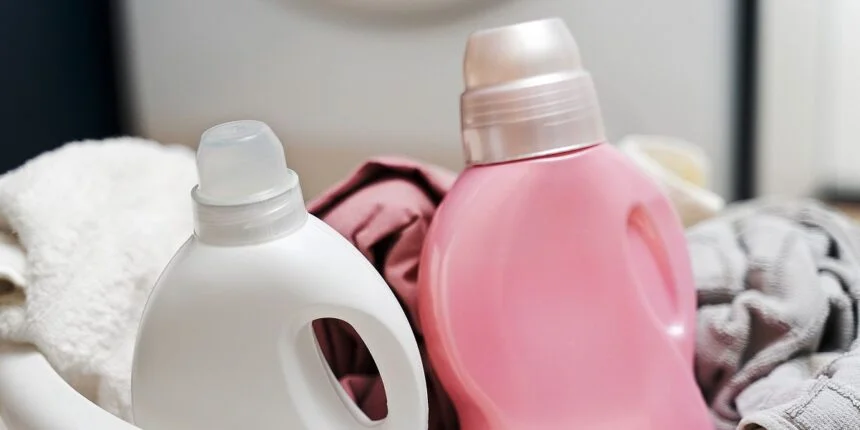When my mother-in-law turned my entire wardrobe white with bleach and told me to be grateful, I knew an apology wouldn’t cut it. So, I gathered my evidence, called a family meeting, and made sure she learned that “helpful” has consequences when it comes with a price tag and a smug smile.
I met my husband, Jeffrey, seven years ago at a coffee shop near my office. He’d spilled his latte all over a stack of my client files, panicked, and offered to buy me another coffee as an apology.
I said yes mostly because he looked so genuinely horrified, and because there was something about his easy smile that made me laugh despite the soggy papers in my hands.
By the third date, we were finishing each other’s sentences.
By the sixth, we were talking about moving in together.
When we got married, his mother, Irene, seemed polite enough. She had that warm-but-distant formality that some women of her generation carry like a shield. She sent me a congratulatory text that said, “Welcome to the family.
You seem very capable.”
That word, capable, should’ve been my first clue that she’d spend the next several years testing exactly how capable I really was.
Five months ago, Irene’s apartment building started major renovations after a plumbing disaster flooded half the units. Jeffrey suggested she stay with us “just until her place is fixed.”
I agreed, of course. What kind of monster refuses to help their elderly mother-in-law when her bathroom ceiling literally caves in and she’s got nowhere else to go?
But from the day she arrived with three oversized suitcases and a framed portrait of Jeffrey as a child, it’s been absolute chaos.
She comments on everything I do.
The way I chop vegetables is “too small, it ruins the texture.” The way I load the dishwasher is “modern nonsense, you waste water.” Even the way I greet the mailman is “too familiar, dear.”
She’s constantly telling me I’m raising our three-year-old daughter, Emma, wrong. Too permissive, not strict enough, spoiling her with screen time.
Every morning, she follows me into the kitchen in her silk robe, watching like a disapproving supervisor on a factory floor. If I make coffee, it’s “too bitter.” If I make oatmeal, it’s “too runny.” If I order takeout after a long day at work, she sighs like I’ve personally offended the entire lineage of homemakers stretching back to the dawn of time.
And Jeffrey?
He tries to stay neutral.
He says things like, “Mom just means well,” while quietly escaping to the garage to tinker with his tool collection. But I’m the one trapped in the daily feedback loop of Irene’s “suggestions,” which aren’t really suggestions at all. They’re criticisms dressed up in concern.
I’d been handling it pretty well, honestly.
Deep breaths, counting to ten, and reminding myself it was temporary. I even started keeping a mental tally of her comments, thinking maybe one day I’d laugh about it.
Then last week happened, and the tally stopped being funny.
While I was at work, Irene decided to “help” with the laundry. That alone made me nervous, because she’s the kind of woman who thinks bleach can fix anything.
When I got home that evening, she was standing in the laundry room with her arms crossed, grinning like she’d just saved the world from dirt itself.
“Oh, good, you’re back!” she said proudly. “You’ll thank me later, dear. I used that amazing cleaning trick I saw on TikTok.
Your clothes have never looked this fresh! You should really trust my methods more.”
At that point, I knew something was not right. I walked past her and opened the washer, and I nearly screamed.
My favorite pink sweater, the one Jeffrey bought me for our anniversary, was now bright white.
Not pale pink. Not faded. White.
Every single piece of clothing inside had turned the same ghostly shade.
My black work pants were now white. My navy dress? White.
It looked like someone had dumped a bucket of paint over everything.
“Oh my… Irene…” I gasped.
“What did you do?”
She just smiled, tilted her head like I was a confused child, and said sweetly, “Well, at least they’re clean now. You should be grateful it’s finally clean now, dear!”
I stared at her. She wasn’t apologizing.
She wasn’t even pretending to be sorry. She was proud.
That was the moment I knew she’d done it on purpose. And that was the moment I decided to teach her a little cleaning lesson of my own.
I didn’t explode.
I didn’t cry or yell or throw the ruined clothes at her feet, even though every fiber of my being wanted to. Instead, I collected evidence.
I took photos of everything, including the pink sweater that was now white, the navy dress, and the black pants. I photographed the washer, the bleach-streaked suds still clinging to the drum, and the single bottle of bleach I found shoved under the sink with the cap still damp.
That cap wasn’t where I keep my detergent, and Irene knew it.
I texted Jeffrey a quick photo with the caption, “Call me when you can.”
Then, I called the dry cleaner and explained what happened. They asked me to bring everything in for an assessment.
The next morning, I boxed up the ruined pile so nothing else would get mixed up and left it in the garage.
The dry cleaner called back with a blunt estimate that made my heart skip a beat. Half of the clothes were unsalvageable.
The rest could be color-corrected, but it would cost a small fortune. Replacement cost for some of the pieces, including my anniversary sweater, was honestly not small. I printed the estimate and tucked it into a folder.


